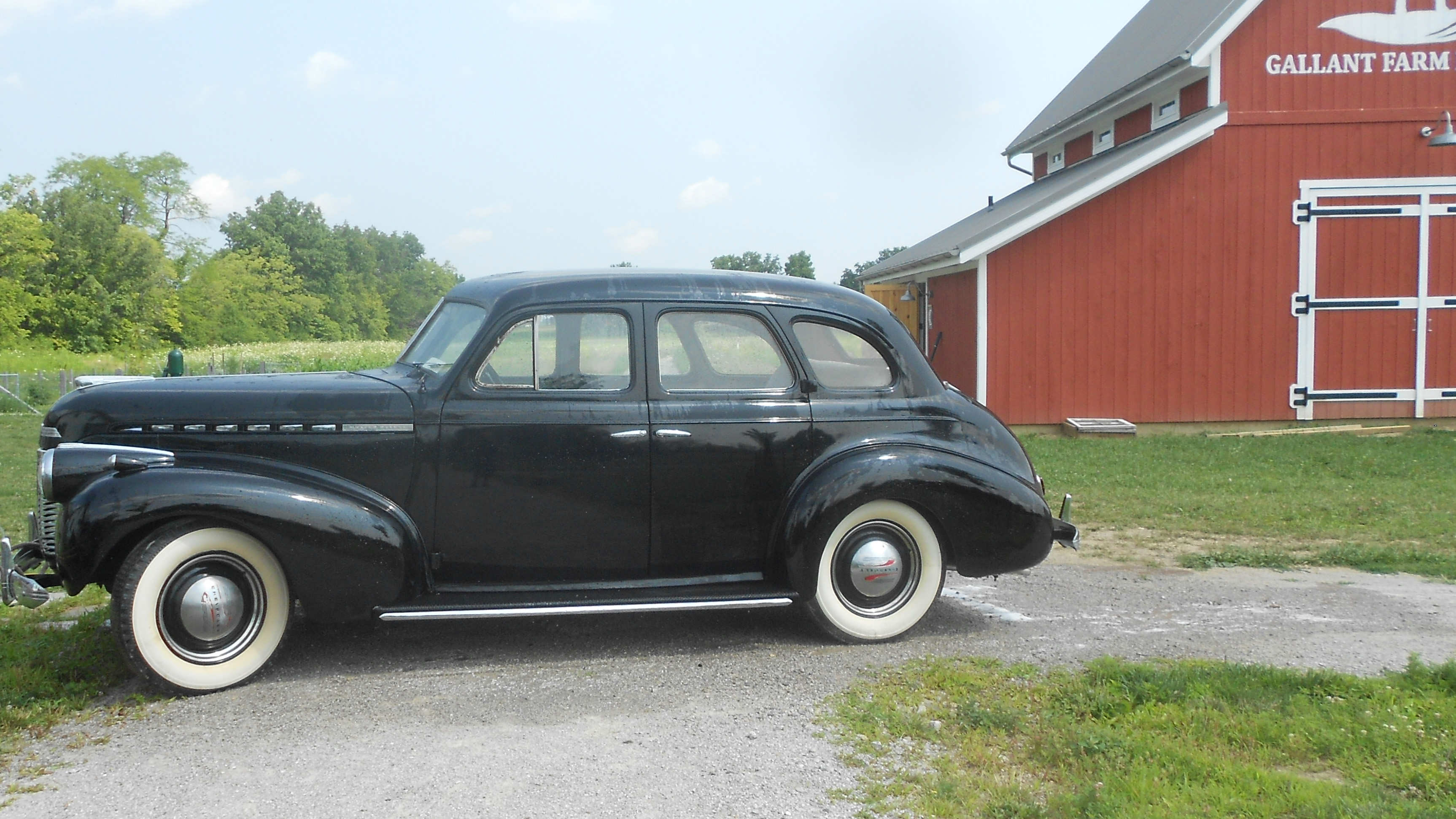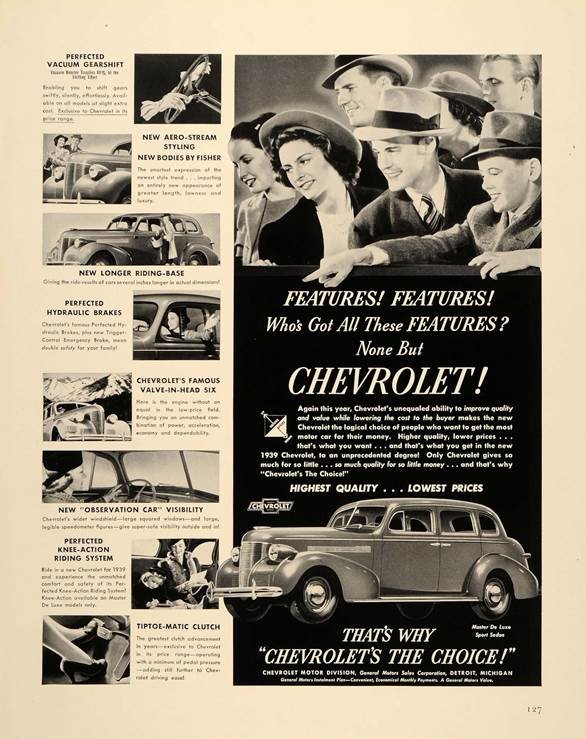
By Gabe Ross, Gallant Farm manager
Several years ago, Preservation Parks was the fortunate recipient of a 1940 black Chevy Master De Luxe auto, graciously donated by Chuck and Betty Sheets for exhibit at Gallant Farm. The car was recently tuned up to be road worthy, and we are hoping to get it out into the community and use it to advertise the park district and Gallant Farm. So that makes this a good time to highlight the car and its contribution to American car culture.
In 1940, Chevrolet came out with a new line of cars called The Master 85, Master De Luxe and, Special De Luxe sports sedans. These sedans had what Chevy called “Royal Clipper” styling, a facelift designed to make the cars look more modern. In an ad from a December 1939 issue of Life magazine, the car is pictured with a stylish woman in evening dress in front of the car ready for a night on the town. The Master De Luxe offered a stylish appearance for less money than the upscale Buicks. The car’s original base price was $659, which is equivalent to about $11,500 today.
Besides looking more modern, the auto also featured independent front suspension and a vacuum power shift to a synchronized transmission. The vacuum shift was supposed to allow the driver just to flick the shifter and vacuum pressure would pull it into gear. The car does shift fairly easily with a “three on the tree” shifter, meaning that the shifting is done on the column rather than the floor. However, it takes a little more energy than just a flick of one finger!
The synchronized transmission allows the car to be shifted pretty much like a modern stick shift without the need for double clutching like older models. Double clutching means you depress the clutch shift into neutral, then let the engine and transmission match speed, and then depress the clutch again and shift into the desired gear. That’s a mouthful to say and it was difficult to learn for a new driver. So, the new synchronized transmission was a welcome feature. (I will say, though, that despite the synchronized transmission, double clutching does seem to help while down shifting in this Chevy.)
These sedans had plenty of room for a family but didn’t offer safety features such as seatbelts, side view mirrors or turn signals. Hand signals were still the preferred method of the day. The driver bent his arm 90 degrees and pointed towards the sky for a right turn, straight out for left, and 90 degrees and pointed toward the ground for slowing down. There are still plenty of people today who remember signaling that way!
Our 1940 Master De Luxe runs down the road pretty smooth at 50 miles per hour considering it is almost 80 years old. It does sway quite a bit in the wind and it takes some oomph to depress the non-power brakes, but it runs just fine for country roads on nice days. If you’d like to see the car, come out to Gallant Farm and look for yourself at this piece of America’s car culture. If you venture into the farmhouse, see if you can find the ad for the car in the 1939 Life Magazine. 






